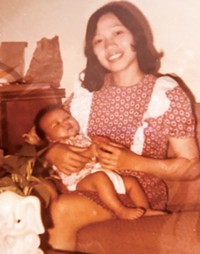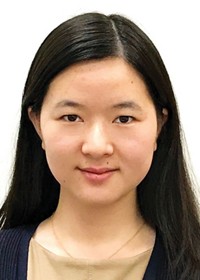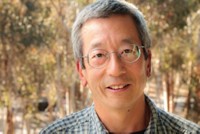Advertisement
Grab your lab coat. Let's get started
Welcome!
Welcome!
Create an account below to get 6 C&EN articles per month, receive newsletters and more - all free.
It seems this is your first time logging in online. Please enter the following information to continue.
As an ACS member you automatically get access to this site. All we need is few more details to create your reading experience.
Not you? Sign in with a different account.
Not you? Sign in with a different account.
ERROR 1
ERROR 1
ERROR 2
ERROR 2
ERROR 2
ERROR 2
ERROR 2
Password and Confirm password must match.
If you have an ACS member number, please enter it here so we can link this account to your membership. (optional)
ERROR 2
ACS values your privacy. By submitting your information, you are gaining access to C&EN and subscribing to our weekly newsletter. We use the information you provide to make your reading experience better, and we will never sell your data to third party members.
People
Arthur C. Cope Award: Alice Y. Ting
Recipients are honored for contributions of major significance to chemistry
by Linda Wang
February 22, 2010
| A version of this story appeared in
Volume 88, Issue 8
At age 34, Alice Y. Ting, Pfizer Laubach Career Development Associate Professor of Chemistry at Massachusetts Institute of Technology, has carved out a niche for herself with her groundbreaking contributions to the development of fluorescent probes to image protein interactions inside of cells.
“Since starting her independent career at MIT, Alice has quickly made her own mark in the field by developing totally different ways of specifically labeling proteins,” says Sunney Xie, a professor of chemistry and chemical biology at Harvard University.
Specifically, Ting was cited for her development of lipoic acid ligase to site-specifically incorporate fluorescent and cross-linking probes into proteins. She is using these probes to image the AMPA (α-amino-3-hydroxyl-5-methyl-4-isoxazolepropionate) receptor, as well as other receptors.
“Her intensity and enthusiasm for science are very apparent, and it is clear that she will be a leader in the development of novel chemical approaches to investigate biological problems in vivo,” says JoAnne Stubbe, Novartis Professor of Chemistry & Biology at MIT.
Ting was born in Taiwan, and at age three she immigrated to the U.S. with her parents and two younger brothers. She grew up in Dallas and attended the Texas Academy of Math & Science, where she developed an interest in organic chemistry.
She cultivated this interest as an undergraduate at Harvard University. “Alice Ting was one of the most impressive undergraduates whom I have known in more than 50 years at Harvard,” says Nobel Laureate Elias J. Corey, whose organic chemistry lab Ting joined as a freshman. “She is highly intelligent, mature, and strongly motivated to do first-rate science.”
Corey remembers the day Ting appeared in his office and introduced herself. “She was very poised and mature and told me she wanted to do research in my lab and that she liked chemistry,” Corey says. “I was positively impressed from that very beginning.”
Ting continued to impress Corey throughout the four years she worked in his lab. “Her work was outstanding for an undergraduate,” Corey says. “Her written thesis was perfect; not a word had to be changed.”
Ting earned a B.S. in chemistry from Harvard in 1996 and went on to receive a Ph.D. in 2000 from the University of California, Berkeley, under the mentorship of Peter G. Schultz. She completed a postdoc in Roger Y. Tsien’s lab at UC San Diego. She joined the faculty at MIT in July 2002.
Ting has a long list of awards, including the 2010 Eli Lilly Award in Biological Chemistry, the 2008 National Institutes of Health Director’s Pioneer Award, and the 2007 ACS Buck Whitney Award, to name just a few. In 2006, she received a TR35 Young Innovator Award from Technology Review.
Her colleagues can’t say enough positive words about her. “The other thing I would say about Alice is that she’s fearless,” Corey says. “She looked hard for fertile new scientific territory in new areas, and having the courage to go into new areas is something I would have expected of her.”






Join the conversation
Contact the reporter
Submit a Letter to the Editor for publication
Engage with us on Twitter